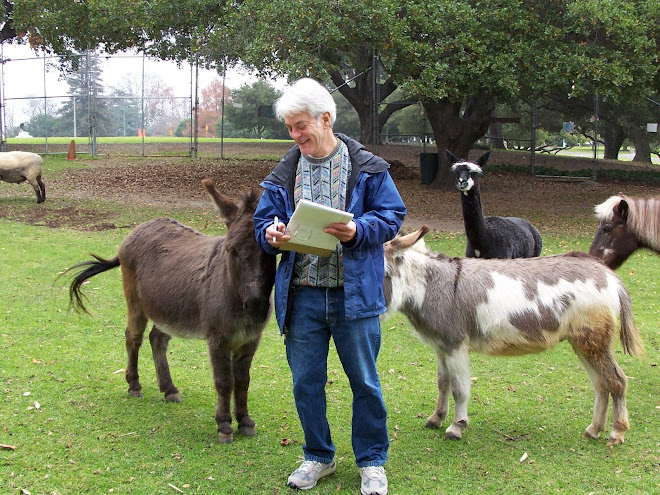
(Above: Amprphophallus Titanum, aka the Giant Stinky Plant)
Is the cool weather we've been having this summer getting you down? That's nothing compared to how it's affecting the plants at the UC Berkeley Botanical Garden.
"It's delayed all kinds of plant activity - when they sprout, when they start producing leaves and flowers, when they bloom and when they set fruit," says Director Paul Licht.
"We have two Palo Verde trees at our entrance. Usually, they're covered with beautiful yellow flowers; but this year they've barely set buds. I don't think they'll bloom this season at all."
The geophytes - including tulips and gladiolas - are also suffering.
"We're afraid they're going to lose their bulbs. Every year, they have to grow their green foliage, which supplies food to make the bulb grow large. If it isn't hot enough, they miss a season of growth and use up a lot of energy from the bulb that hasn't been replenished. They feel miserable."
But there's an upside, too, especially for visitors: A lot of plants that usually are dormant in the summer are staying in bloom much longer than they normally would. So it you were ever going to visit the Botanical Garden, now's the time.
Licht gave me a tour last week, and I have to tell you: I was absolutely fascinated. The place is like Disneyland for plant lovers. And it doesn't take you long to become one.
I know nothing about plants. In fact, neither did Licht before he took this job. He had just retired from a distinguished career as a zoologist when the university called and asked him to come out of retirement and take over the Botanical Garden. And, like me, he got hooked.
The garden has more than 10,000 different species of plants, and 1,300 of them have been officially declared endangered species.
"The number is probably twice that amount because they're so rare, we don't even know if they're endangered or not," says Licht. "Some are so poorly known that we may have some species that haven't been described yet."
One new acquisition is a previously unknown orchid that was collected in the Dominican Republic by a local researcher named Donald D. Dodd, who left it to the Botanical Garden when he died.
They've named it after him: Orthinidium Donalddeedoddii.
The plants come from all over the world, including Amprphophallus Titanium - aka the Giant Stinky Plant - which comes from Sumatra. But some of the garden's rarest acquisitions come from a lot closer to home, such as the Mount Diablo buckwheat, which was thought to have gone extinct in 1936.
Just like a work of art, each plant has its own provenance. And a plant that has grown in the wild is much more valuable than a plant that has been hybridized or cultivated in a nursery.
The Botanical Garden only collects plants that were grown in the wild, which makes it an invaluable resource not only for other botanical gardens but also for us, the public.
Twice a year, the Botanical Garden has a public sale, where you can buy seedlings of some of its rarest plants, including the Giant Stinky Plant.
The next sale will be Sept. 26. But I wouldn't wait until then to check out this amazing garden, which boasts plants from every continent except Antarctica.
"And as soon as it melts, we'll probably get some from there, too," says Licht.














